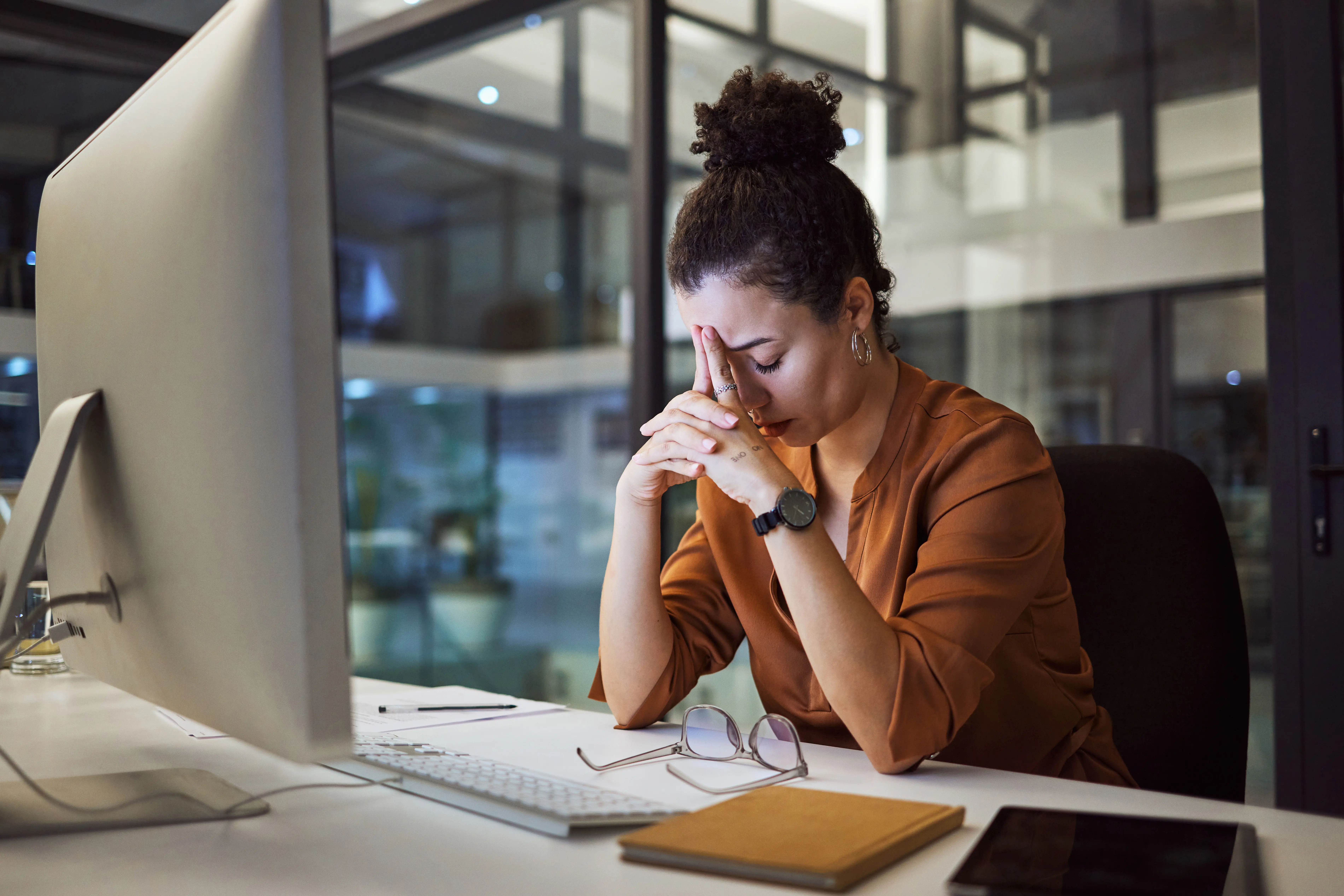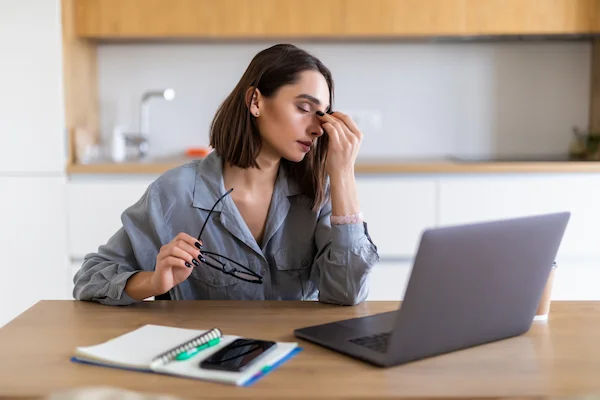10 Relaxation Techniques To Reduce Stress And Anxiety
Discover 10 simple relaxation techniques for stress relief and anxiety. Step-by-step tips, benefits, and how to build a calm daily routine.

Written by Dr. J T Hema Pratima
Reviewed by Dr. Rohinipriyanka Pondugula MBBS
Last updated on 27th Nov, 2025

Introduction
Stress and anxiety touch nearly everyone at some point. When they last too long or feel overwhelming, they can affect sleep, focus, mood and overall health. The good news is that simple relaxation techniques can calm your nervous system and offer steady stress relief you can feel. With just a few minutes a day, you can start building a more peaceful routine that supports your mind and body.
How Relaxation Techniques Help Your Body and Mind?
When you’re stressed, your body’s “fight-or-flight” response speeds up breathing and heart rate and tenses muscles. Relaxation practices activate the opposite response, often called the relaxation response, which helps:
- Slow breathing and heart rate
- Relax tight muscles
- Ease mental tension and worry
- Improve sleep quality and focus
These skills take practice, but most people notice benefits within days or weeks. It’s fine to start small and build up; consistency matters more than perfection.
Consult Top Specialists
10 Relaxation Techniques You can Start Today
Try one or two methods for a week, then adjust based on what feels best. You can mix and match and create a personal stress relief plan. Here’s a quick preview of the options you can explore:
1) Diaphragmatic (belly) Breathing
Here’s how this simple but powerful technique works:
Why it helps:
- Deep, slow breathing signals safety to your nervous system and can reduce muscle tension and racing thoughts.
Try it:
- Sit or lie comfortably. Place one hand on your belly and one on your chest.
- Inhale slowly through your nose for 4 seconds, feeling your belly rise.
- Exhale gently through your mouth for 6 seconds, belly falling.
- Repeat for 3 to 5 minutes.
Variations:
- Box breathing: Inhale 4, hold 4, exhale 4, hold 4.
- 4-7-8 breathing: Inhale 4, hold 7, exhale 8.
Tips:
- If you feel lightheaded, slow down or take a break.
- Practise during calm moments so it’s easier when stressed.
2) Progressive Muscle Relaxation (PMR)
Here’s what to expect from this structured tension-release method:
Why it helps:
- Tensing and relaxing muscle groups teaches your body the difference between tension and ease.
Try it (about 10 minutes):
- Start at your feet. Inhale and gently tense the muscles for 5 seconds.
- Exhale and fully relax for 10 to 15 seconds.
- Move upward: calves, thighs, glutes, belly, hands, arms, shoulders, face.
- Keep breathing slowly as you go.
Tips:
- Avoid tensing if it causes pain or if you have certain conditions; choose a gentler method instead.
3) Mindfulness Meditation
Here’s a simple approach to getting started:
Why it helps:
- Mindfulness trains your attention to return to the present, which can reduce rumination and worry.
Try it (3 to 10 minutes):
- Sit comfortably, eyes open or closed.
- Focus on your breath or a simple anchor such as sounds or sensations.
- When the mind wanders (it will), gently return without judgement.
Everyday mindfulness:
- Notice one daily activity with full attention, such as showering, making tea, or walking to the letterbox.
4) Guided Imagery
Here’s how to use your imagination to shift your emotional state:
Why it helps:
- Evoking calming mental images can quiet stress signals and shift mood.
Try it (5 to 10 minutes):
- Sit or lie down and close your eyes.
- Picture a peaceful place such as a beach, forest or cosy room.
- Engage the senses: what do you see, hear, smell and feel?
- Continue breathing slowly as you explore the scene.
Tips:
- Use audio guides if you prefer being led through the process.
5) Gentle Yoga
Here’s how movement and breath combine to reduce stress:
Why it helps:
- Yoga combines stretching, slow movement and controlled breathing, which may ease muscle tension and calm the mind.
Try it:
- Choose beginner-friendly videos or classes (restorative, yin or gentle hatha).
- Move with comfort; pain is a cue to ease off.
- End with 3 to 5 minutes of deep breathing or a short body scan.
Safety:
- If you have injuries, chronic pain or are pregnant, consult a clinician or instructor for modifications.
6) Tai Chi or Qigong
Here’s what makes these ancient practices effective:
Why it helps:
- Slow, flowing movements with synchronised breathing can promote balance, focus and calm.
Try it:
- Look for community classes or short online sessions for beginners.
- Practise 10 to 20 minutes most days for best results.
Tips:
- A small open space and comfortable clothing are all you need.
7) Grounding with the Senses (5-4-3-2-1)
Here’s how this technique anchors you during spikes of anxiety:
Why it helps:
- Grounding shifts attention to the present moment, helping during episodes of anxiety or panic.
Try it anywhere:
- Name 5 things you see.
- 4 things you can touch.
- 3 things you hear.
- 2 things you smell.
- 1 thing you taste or take a slow deep breath.
- Repeat once or twice with slow exhalations.
8) Journalling and Gratitude
Here’s how writing can support emotional clarity:
Why it helps:
- Putting thoughts on paper can organise worries and create distance from them. Gratitude entries shift attention towards positives.
Try it (5 minutes):
- Brain dump: write whatever is on your mind, no judging or fixing.
- Or gratitude: list 3 things you’re thankful for and why they mattered today.
Tips:
- Set a consistent time such as morning or before bed to build the habit.
9) Nature and Light Movement
Here’s why gentle outdoor time can make a noticeable difference:
Why it helps:
- Time in green spaces and gentle physical activity can brighten mood and lower tension for many people.
Try it:
- Take a 10 to 20 minute walk outdoors, noticing sights and sounds.
- If outdoors isn’t accessible, look at nature views, tend a plant or sit by a window with natural light.
Safety:
- Choose well-lit, safe routes and wear supportive shoes.
10) Biofeedback and Relaxation Apps
Here’s how technology can support your routine:
Why it helps:
- Biofeedback uses sensors to show signals like heart rate or muscle tension, helping you learn voluntary control. Many people also find app-based breathing timers, guided meditations and sleep stories helpful.
Try it:
- Explore reputable apps with evidence-informed content and privacy protections.
- If curious about biofeedback, ask your clinician about referrals or local programmes.
Make Stress Relief a Daily Habit
Here’s how to weave these techniques naturally into your routine:
- Start tiny: 2 minutes of breathing after brushing your teeth.
- Pair practices with routines: PMR before bed, a short walk after lunch.
- Set reminders using phone alarms or notes.
- Track what works: note mood, energy and sleep in a simple log.
- Stay flexible: the best routine is the one you’ll actually do.
When to Seek More Help?
Relaxation techniques are helpful skills, but they aren’t a substitute for medical care when needed. Seek professional help if:
- Stress or anxiety interferes with work, relationships or daily tasks
- Panic attacks or persistent insomnia occur
- You are using alcohol or drugs to cope
- You have thoughts of harming yourself or others (seek emergency help immediately)
Conclusion
Relaxation techniques are powerful, accessible tools that can help you manage stress, calm your mind and improve overall wellbeing. They work best when practised consistently and paired with a supportive lifestyle, including healthy sleep, regular movement and balanced nutrition. While these methods can make a meaningful difference, they are not a replacement for professional care when stress or anxiety becomes overwhelming. With steady practice and the right support, you can build a calmer daily rhythm and strengthen your ability to cope with life’s challenges.
Consult Top Specialists
Consult Top Specialists

Dr. Syed Ismail Ali
General Practitioner
7 Years • MBBS
Hyderabad
Apollo 24|7 Clinic, Hyderabad

Dr. Harshendra Jaiswal
General Physician/ Internal Medicine Specialist
12 Years • MBBS , MD (General medicine)
Kolkata
108 DHANA DHANVANTARI Clinic, Kolkata
(25+ Patients)

Dr. Anand Ravi
General Physician
2 Years • MBBS
Bengaluru
PRESTIGE SHANTHINIKETAN - SOCIETY CLINIC, Bengaluru

Dr Syed Mateen Pasha
General Physician
2 Years • MBBS
Bengaluru
PRESTIGE SHANTHINIKETAN - SOCIETY CLINIC, Bengaluru

Dr. Srujana Mulakalapalli
General Physician/ Internal Medicine Specialist
5 Years • MBBS, MD (GENERAL MEDICINE)
Bengaluru
Apollo Medical Center, Marathahalli, Bengaluru
(25+ Patients)
Consult Top Specialists

Dr. Syed Ismail Ali
General Practitioner
7 Years • MBBS
Hyderabad
Apollo 24|7 Clinic, Hyderabad

Dr. Harshendra Jaiswal
General Physician/ Internal Medicine Specialist
12 Years • MBBS , MD (General medicine)
Kolkata
108 DHANA DHANVANTARI Clinic, Kolkata
(25+ Patients)

Dr. Anand Ravi
General Physician
2 Years • MBBS
Bengaluru
PRESTIGE SHANTHINIKETAN - SOCIETY CLINIC, Bengaluru

Dr Syed Mateen Pasha
General Physician
2 Years • MBBS
Bengaluru
PRESTIGE SHANTHINIKETAN - SOCIETY CLINIC, Bengaluru

Dr. Srujana Mulakalapalli
General Physician/ Internal Medicine Specialist
5 Years • MBBS, MD (GENERAL MEDICINE)
Bengaluru
Apollo Medical Center, Marathahalli, Bengaluru
(25+ Patients)
More articles from Stress
Frequently Asked Questions
How long does it take to feel benefits?
Many people notice a sense of calm within minutes of breathing or grounding exercises. For longer-lasting changes—like better sleep or fewer anxious thoughts—practice most days for 2–8 weeks. Small, consistent sessions are effective.
What’s the best time of day to practice?
Any time you can be consistent works. Common choices: a few minutes after waking, a midday reset, or a wind-down routine before bed.
Can these techniques replace medication or therapy?
No. They can complement professional care and often enhance results, but they don’t replace treatments recommended by your clinician. If you’re on medication or in therapy, let your provider know what you’re practicing.
Are these methods safe for everyone?
Most are gentle and low risk. If you’re pregnant, have heart or lung conditions, chronic pain, or a history of fainting, talk with a clinician before starting new movement practices or breath holds. Stop if you feel dizzy, short of breath, or unwell.
What helps most during a panic attack?
Slow, steady breathing and grounding (like the 5-4-3-2-1 method) can help during a panic episode. If panic attacks are frequent, seek guidance from a healthcare professional; therapies like cognitive behavioural therapy are often recommended.




